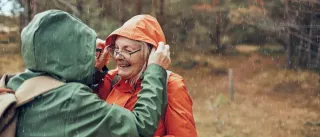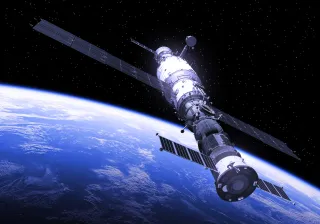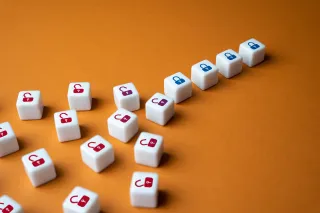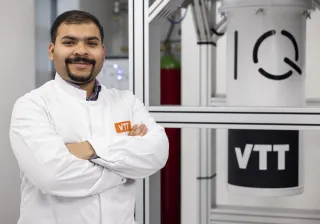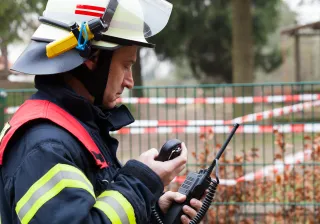A little over a year ago, I was offered an amazing opportunity to work at NASA’s research center in California for six months. With the researcher exchange behind me, I am now ready to reflect on the fruits of my labour. Looking back, what insights did I acquire from the experience?
My participation in the researcher exchange was made possible through the EYES project, funded by the Academy of Finland. The project aims to explore the capabilities of wearable measurement devices, novel measurement technologies, and machine learning in estimating human cognitive state and fatigue. The opportunity presented itself due to the alignment of my expertise with NASA’s research focus. The collaboration was fruitful since we communicated effectively and benefited from each other’s perspectives.
My time at NASA taught me a lot about factors that may affect the human cognitive state, as well as the things that should be kept in mind when carrying out any related measurements. During my exchange, I was able to use, process and analyse four datasets collected by NASA. In the autumn, I managed to get the data organised and I could start to think about methods for analysing it. During this phase, I worked in close collaboration with a statistics expert from NASA. The analysis I conducted paved the way for me to begin writing an article based on it in Finland.

Astronauts and the art of space travel
During my final exchange period, I found myself in Houston, where I was able to visit the Johnson Space Center, renowned as a hub for space flight communication. It was here that the iconic message ‘Houston, we have a problem’ was famously received. In Houston, my Californian colleagues organised a tour which became one of the highlights of the exchange period. I got to see space shuttle replicas used in preparation for the Artemis campaign as well as observe astronauts undergoing simulated spacewalk training in a large swimming pool. I even had the amazing opportunity to shake hands with an astronaut but was so awestruck that I completely forgot to take a selfie.
While in Houston, I also attended a conference that brought together all the Human Research scientists working at NASA. The event highlighted the ongoing research efforts in the field and provided a valuable platform for fostering collaboration opportunities within the organisation. Partners from altogether 14 countries were also present at the conference. During the conference, NASA outlined the key focus areas for human research within the Artemis project and offered valuable insights into the variety of measuring instruments suitable for space missions. Factors such as the weight or power consumption of the equipment can significantly impact the decisions regarding onboard devices. These insights could also be highly beneficial for VTT in furthering the development of human measurements and sensor solutions.
At the conference, I also presented a summary of the preliminary results of the analyses I had executed. For NASA this is a particularly special topic, as the study of eye movements and their role in detecting fatigue is not extensively explored within the agency. For instance, NASA scientists typically focus on questions such as the impact of space flights on vision. My results still managed to stimulate discussion, since some NASA scientists employ the same Golden Standard method in their research that I used to validate the eye movement method.

A well-rounded experience amidst a busy life
My going on researcher exchange meant taking a plunge into the unknown for my entire family. Immersing myself in the experience amidst some of the busiest years of my life was a transformative and enriching experience. Initially, I was thrilled about being able to plan my own schedules and daily rhythm. It was also liberating to notice that back at home things were rolling along just fine without me too. I took the opportunity to learn how to enjoy my newly discovered me time by going to the cinema, dining out, and attending concerts by myself. While the experience was wonderful all in all, I also missed doing things together with my family. I’m extremely grateful for the support and love of my entire family as I took this leap into the unknown.
My exchange periods varied in length, lasting from four to eleven weeks. This required me to do some juggling between work and family commitments. In terms of work, four weeks felt like a short time: I always needed time to get things started, even when the work had been carefully documented during the previous period. Just as things started gaining momentum, it was time to return home. Longer periods were more advantageous for work but also meant I had to spend a long time away from my family.
During my final exchange period, my colleague Ilona Ruotsalainen arrived in Sacramento as part of a similar exchange programme. We had a little outing, during which I took Ilona on a tour around San Francisco. Having peer support was refreshing for both of us. However, now that the exchange is over, I have to admit feeling a bit discombobulated. Returning home is always a big change, so mental preparation is advisable.

NASA and VTT play in the same league
It was wonderful to see that the leading research units and laboratories at NASA are grappling with very similar issues to those we encounter here in Finland. Contract negotiations and resource constraints are everyday concerns even at NASA, and there are occasions when datasets cannot be analysed as thoroughly as they ideally should be. The quality of research, tools, and methods at both NASA and VTT are also quite comparable, which really underlines the high standard of research carried out in Finland.
The cooperation between NASA and VTT has proven to be successful, and the Director of the Fatigue Countermeasures laboratory Erin Flynn-Evans would be happy to see it continue. We are currently working on securing additional Jointly Funded Grants to make this happen. If things go well, a doctoral candidate may well find themselves continuing the work on NASA datasets. This is something that interests NASA as well: now that the materials are ready for use, the opportunities are endless.


